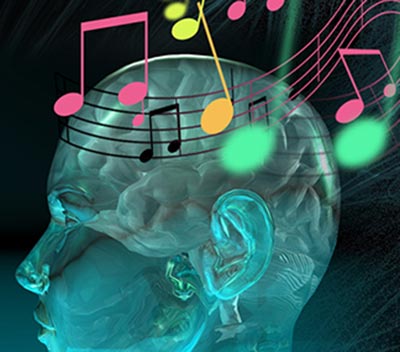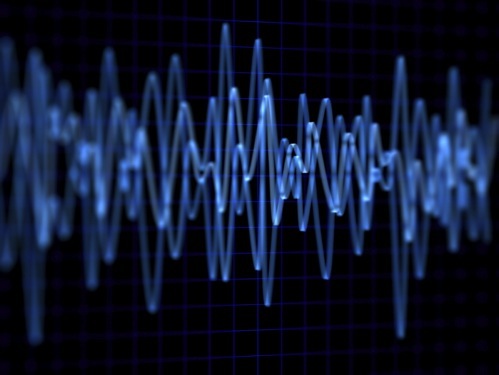There are a number of different types of brainwave entrainment, including binaural beats, isochronic tones, monaural beats, and sound and light entrainment. Each method is designed to encourage the brain to move into a specific state.

What is Brainwave Entrainment?
Brainwave entrainment triggers the brain's ‘frequency following’ response. This means that it encourages the brainwaves to synchronize with the frequency of the beat/tone. The brain follows along at the frequency it perceives from the sound source.
An example of the frequency following response is seen in epilepsy sufferers when a strobe light is flashed at the frequency that triggers a seizure. The brain is entrained to the flashing light and a seizure occurs.
Positively, though, brainwave entrainment can be used to encourage states of wellbeing and correct brainwave imbalances.
5 Main Types of Brainwave Entrainment
There are 5 main types of brainwave entrainment. These cover passive audio entrainment, combined light and sound, and active EEG entrainment.
Here's an explanation of each.
1. Binaural Beats
Binaural beats are the most popular form of BWE, and this technology is the primary method of choice for the majority of scientific research in this area.
Binaural beats entrain the brain to follow along at a specific frequency. This is actually a trick of sorts, which occurs because of the way we perceive sound.
When we hear a sound, we are able to locate where it is coming from by detecting the tone differences between each of our ears. Our brainwaves then begin to pulse – know as phase resonance – at the difference between the tones. Using this ‘phase difference’ we are able to detect the direction of the sound.
Binaural beats play a different tone to each ear at a specific frequency. When the brain receives the frequencies its brainwaves begin to resonate at the mathematical difference between the two tones.
For example: If 10 Hertz is sent to the left ear and 5 Hertz is sent to the right ear, the difference is 5 Hertz. The brain will then follow along at this frequency (frequency following response).
Because of the way binaural beats work – sending a different frequency to each ear – headphones are required for the process to be fully effective.
2. Monaural Beats
Monaural is derived from the word mono, meaning ‘single' or ‘one'. As such, monaural beats entrainment uses a single pulsing beat created by the convergence of two tones in one speaker (mono) (1).
Unlike binaural beats, the effect (the resulting frequency) is achieved outside of the brain and before it reaches the ear.
Monaural beats are considered as effective as binaural beats, but are generally less pleasant to listen to and more difficult to embed in a musical overlay without too much dissonance. For this reason that aren't as commonly used.
Monaural beats can be used without headphones.
3. Isochronic Tones
Isochronic tones are a single tone form of brainwave entrainment.
The effect is created outside the brain by rapidly turning the single tone on and off, resulting in a pulsating sound. The rate of the pulsing is measured in Hertz and is set at the desired frequency of entrainment.
While very effective in the higher frequency ranges of beta and gamma, many people find the sound of isochronic tones quite unpleasant to listen to.
What's the Difference Between Isochronic Tones & Binaural Beats & Which is Better?
4. Sound & Light Entrainment
Sound and light entrainment (audio-visual entrainment (AVE) is an alternative to the solely audio types discussed above.
This type of entrainment makes use of binaural, monaural or isochronic beats/tones and visual signals delivered via sound machines, photic entrainment, or mind machines.
Modern examples of sound and light entrainment devices are BrainTap and Limina.
Enthusiasts assert that the combination of sound and light can elicit a faster brain response than audio alone.
5. EEG Active Entrainment
‘EEG active' refers to real-time sound and/or light entrainment delivered by an EEG machine (electroencephalography). This means the entrainment responds to the brainwave activity occurring in your brain.
The EEG sensors monitor your brain activity and adjust the entrainment to suit your needs.
This type of entrainment is said to be useful for those who are deficient in a particular brainwave band (alpha, beta, gamma, etc). Generally speaking, a specialist at a clinic provides EEG active entrainment. The cost will be per session rather than per product.
Though similar, EEG active entrainment is not the same as neurofeedback. Neurofeedback doesn't entrain your brain but instead uses real-time displays of brain activity to teach you how to regulate your brain function.
Which Entrainment is Right for You?
The most commonly produced audios are made using binaural beats technology.
These audios are usually long-play, 30 minutes or more, and fairly inexpensive at an average of $8 per program.
For those on a budget this is a good entry point to benefit from brainwave entrainment; because you can build a collection as and when you have the money.
There are programs (with multiple “levels”) available that cost upwards of $80, but actually this is unnecessary and more about marketing than anything else. You'll be fine selecting your own audios from a store and putting together a listening routine that suits your goals.
Isochronic tracks are available from some provider websites, but after a surge in popularity circa 2010 they have become more niche again and not so common.
Monaural beats aren't very common either, though they are often used instead of binaural beats for higher frequency ranges such as gamma 30 Hz + (where binaural beats aren't considered as effective). It may therefore be the case that at times you are listening to a monaural beat advertised instead of a binaural beat. It doesn't matter, though, as the effects are generally considered to be on a par.
With the expansion of the wearable tech market, a number of light and sound entrainment products have emerged. If you have the budget (upwards of $500) this is a really fun exploration of technology, with a broad range of benefits for wellbeing.
You can buy an EEG machine for home use but they are expensive. If you are diagnosed with a brainwave deficiency or excess then this treatment will be an option for you. Sessions with a private clinic are likely to cost upwards of $75.
—————-
I realize this technology may be a little confusing for some, so if you do have a question please leave it in the comments section below and I'll try my best to answer it.



Marylyn says
Are monaural beats played with two instruments for example crystal C bowls with. 4 hz difference would entrain brain waves at a theta level- is this considered harmonizing or dissonance? I have seen people use dissonance for brain wave entrainment when I thought a dissonant range starts at 25-30 hz – your thoughts on this please
bbfreak says
Hi Marylyn, I’m not totally sure what you mean here but monaural beats are created using one signal. Mono refers to a source of sound from one direction. You could mix two signals (sound sources) and then output them in mono, rather than having two signals that play in the left and right channels (speakers or headphones), as is the case with binaural beats.
Xavier says
Will the headphones entrainment still work if one of my ears is clogged with trapped ear wax (reduced hearing on the right) and the other ear is clear (normal hearing on the left)
bbfreak says
Yes, I would think so because the frequency vibrations would still get through.
Xavier says
Thank you. I bought two tracks from BBM as per your recommendation. I’ll listen through my earphones while I sleep. No surround sound like closed-back headphones, but earphones make it possible to listen and lie down at the same time.
bbfreak says
Yes, ear buds are fine. You can also get those sleep headphones on Amazon.
Arata Tanaka says
Can binaural beats be combined with microdosing of psychedelic mushrooms to enhance this method of therapy? Or high dose CBD. Neither of which are to get you high
bbfreak says
As long as it’s legal, I’m sure it’s fine 🙂
Charles says
Hi, I was wondering if you know anything about the effect of different brain waves on physical performance, especially rewiring the brain from bad movement patterns. I was born with a mild form of Cerebral Palsy and am looking to use brain wave therapy combined with exercise to accelerate the process of neuroplasticity.
bbfreak says
From my knowledge I would say gamma entrainment could be useful to you, because gamma is the brainwave frequency that helps create synchronicity across the brainwave spectrum. That said, brainwave entrainment overall helps with the stimulation and creation of new neural pathways between the right and left hemispheres of your brain. This is thought to result in elevated brain performance.
Charles Graffius says
I will check it out! Thanks so much!
bbfreak says
You’re welcome!